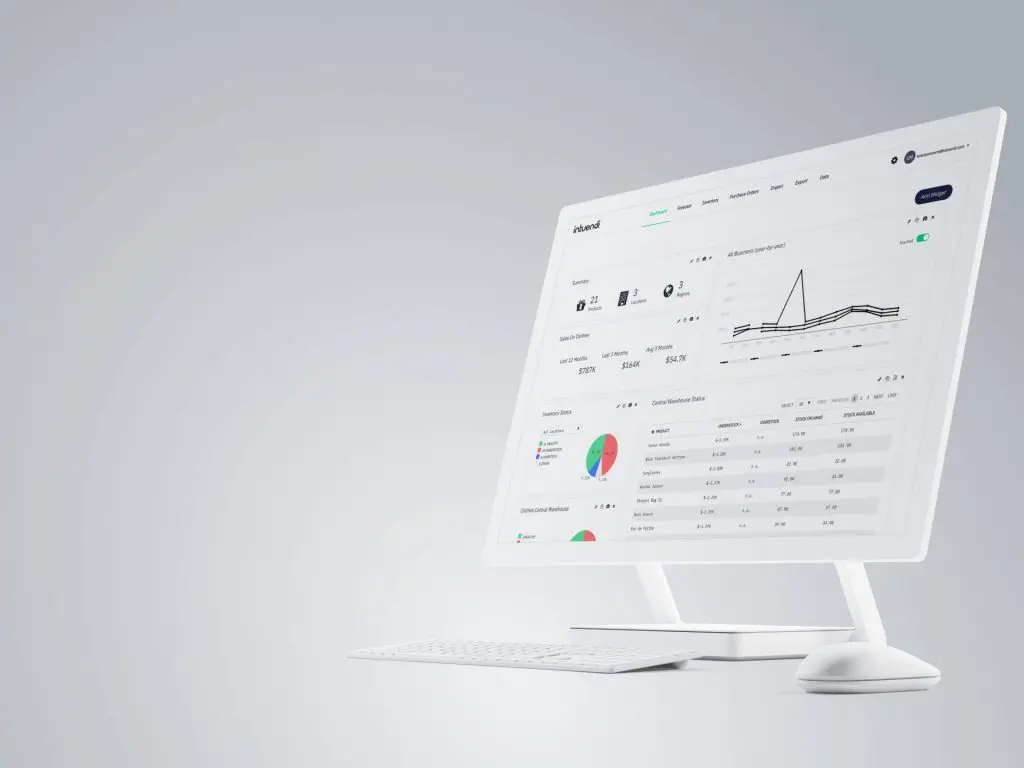Available products, appealing prices, and the capacity to invest on an effective inventory turnover are vital for every business in order to succeed. Therefore it is safe to say that stock outs are one of the worst nightmares for any business that sells physical products. A stock out occurs when a product is out of stock and cannot be delivered to a customer who wants to buy it and is a sign of poor capacity utilization and unsatisfying service levels. Stockouts can lead to customer dissatisfaction, lost sales, damaged reputation, reduced loyalty, and lost customers.
According to a study by IHL Group, stockouts cost retailers $1.1 trillion globally in lost revenue each year. Another study by GT Nexus found that 63% of consumers would be less likely to shop with a retailer again after experiencing a stock out. Furthermore, 34% of consumers would switch to a competitor or buy from another channel after encountering a stock out. Clearly, preventing stock outs is crucial for any business that wants to stay competitive and profitable and it is important to find solutions to such events in order to regain the customer’s satisfaction. But how can you do that? The truth is that the first thing to focus on when stockouts occur is how to achieve effective inventory and supply chain management, as usually the causes of stockouts and lost sales are related to a broken sales and operations planning process – S&OP – that prevents the company from using the available resources (capital, budgets, warehouses) in an optimal way. There are many critical tasks in the S&OP process: deciding how many products to make or buy, where and when to make or replenish them, and choosing the right markets where you will send your products. In this article, we will explore the top 7 strategies to prevent stockouts and optimize your inventory and supply chain management.
1. Inventory Accuracy and Monitoring
Increase inventory accuracy
The first and most important strategy to prevent stockouts is to ensure that your inventory data accurately reflects the reality of your physical stock. This means that you need to have a reliable and consistent way of recording, updating, and verifying your inventory information. Decisions on the right allocation of the supply chain capacity or the best assortment strategy that optimize both margins and inventory levels should be discussed thoroughly among the management team. Increasing inventory accuracy and monitoring is possible by simply following a number of best practices. Sometimes sales teams use lost sales as a key performance indicator – KPI – for the replenishment strategy, by considering them as the forecasted sales for a period, plus the stockouts, minus the actuals in the same period.
Enforce regular cycle counting
Introducing cycle counting, a process where you count a small portion of your inventory on a regular basis, rather than doing a full physical inventory once a year, will allow for more frequent and efficient identification and correction of any discrepancies or errors in your inventory records.
Track inventory levels
In order to avoid overstocking or understocking your products, and to replenish your inventory in time to meet customer demand, it is important to constantly track inventory levels: stock on hand, stock ordered, and stock sold.
Use automated inventory management software
One of the best ways to improve your inventory accuracy and monitoring is to use a software solution that automates the process of inventory tracking. This will reduce the risk of human errors, such as data entry mistakes, miscounts, or misplaced items. A good inventory management software will also provide you with real-time visibility, alerts, reports, and analytics on your inventory performance.
Integrate inventory platforms
If you use multiple platforms or channels to sell your products, such as online, offline, or third-party marketplaces, it is crucial to ensure that all your inventory systems are synchronized and updated. This will prevent you from selling the same product twice, or not having enough stock to fulfill an order from a different channel.
2. Supplier and Supply Chain Management
Identify and work with reliable vendors
Another key strategy to prevent stockouts is to manage your suppliers and supply chain effectively, as they are the sources of your inventory, and can have a significant impact on your inventory availability and quality.
Develop strong relationships with suppliers
Suppliers should not be treated as mere transactional parties. By communicating regularly, sharing information, providing feedback, and collaborating on solutions, you can develop strong relationships with suppliers, developing trust, loyalty, and mutual understanding, which in turn will aid in resolving issues or conflicts more easily. Your choice of suppliers is also of utmost importance. Suppliers must be able to deliver your products on time, in the right quantity and quality, and at a reasonable cost. Suppliers should be evaluated based on criteria such as delivery performance, product quality, pricing, responsiveness, and flexibility.
Monitor the supply chain
You need to closely monitor the entire process of getting your products from your suppliers to your customers. This includes tracking the status, location, and condition of your products, as well as identifying and mitigating any potential risks or disruptions in the supply chain. Tools such as GPS, RFID, or blockchain can greatly assist in enhancing your supply chain visibility and traceability.
Use a vendor-managed inventory system
In order to reduce your inventory costs, improve inventory accuracy, and increase service levels, you may consider introducing a vendor-managed inventory system. This is a type of inventory management where you allow your suppliers to take a more active role in managing your inventory by giving them access to your inventory data and letting them decide when and how much to replenish your stock.
Implement consignment inventory
Yet another option is the implementation of consignment inventory, where you keep inventory at the vendor’s location until it is sold. The benefit of this approach is that you only pay for the inventory when you sell it, and you do not have to worry about storing, maintaining, or insuring it. This can reduce your inventory risk, free up your cash flow, and increase your inventory availability.
3. Forecasting and Planning
A third essential strategy to prevent stockouts is to improve your forecasting and planning capabilities. Forecasting and planning are the processes of estimating and preparing for the future demand and supply of your products. They help you to optimize your inventory levels, avoid excess or shortage of inventory, and meet customer expectations.
Improve forecasting capabilities
It all starts with accurate demand forecasting that will assist you in meeting the customer’s intention to buy. The demand forecasting activity and the analysis of costs, margins, and risks are key factors for a successful decision-making process. In order to improve your forecasting capabilities, you can make use of historical data and market trends to predict the future demand for your products. These forecasts should be updated regularly, accounting for any changes or uncertainties in the market. Techniques such as trend analysis, seasonality analysis, regression analysis, or machine learning, are all useful in improving the accuracy and reliability of your forecasts. Introducing demand planning as a strategy can help your business to improve forecasting the demand for your products.
Utilize demand planning
Demand planning is a process of integrating sales data, promotions, and trends, enabling you to align your inventory with your sales and marketing strategies, and to anticipate and respond to customer demand more effectively. By analyzing both users’ data and exogenous factors that influence customers’ behavior, companies can achieve an impressive demand forecasting. Tools such as demand planning software, collaborative planning, forecasting, and replenishment (CPFR), or sales and operations planning (S&OP) can be utilized to improve your demand planning.
Set reorder points
In order to maintain an optimal inventory level, and to avoid running out of stock or overstocking, you can set reorder points. These are stock levels that automatically trigger a new order for a product and can be calculated based on factors such as your average demand, your lead time, your safety stock, and your desired service level.
Determine lead times
Lead times are the time needed to receive inventory from the time of order, and affect your inventory availability and replenishment frequency. You need to know your lead times for each product and supplier and account for any variations or delays that may occur. Tools such as lead time reduction, lead time analysis, or lead time management can be used to reduce and optimize your lead times.
4. Internal Management
A fourth important strategy to prevent stockouts is to optimize your internal management. Internal management refers to the way you organize, control, and improve your internal processes and resources related to inventory management. It affects your inventory efficiency, quality, and performance.
Identify stockout patterns
By identifying and addressing the root causes of your stockouts, you will be able to prevent them from recurring. In order to identify stockout patterns, data should be analyzed to find common causes. Factors such as frequency, duration, severity, and impact of your stockouts, as well as the products, locations, and times that are most affected by them, should be looked at.
Pay attention to customer trends
Customer trends should be monitored closely by looking at customer feedback, reviews, ratings, and preferences for your products. Your inventory can be adjusted accordingly and your product quality, variety, and availability can improve. Tools such as customer segmentation, personalization, or loyalty programs can be utilized to better understand and serve your customers.
Optimize internal processes
Next on our list of ways in which to improve inventory management is to improve your internal efficiency and effectiveness. By using tools such as lean management, Six Sigma, or Kaizen you can optimize your internal processes leading to streamlined workflows, waste elimination, reduction in errors, and increased productivity.
Establish a backup plan
And if all else fails – have a backup plan! It is important to reduce your dependency on a single source, and to establish a backup plan in order to cope with any unexpected situations such as issues with your suppliers or the supply chain. Examples include diversifying your supplier base, sourcing from multiple locations, or establishing contingency plans for emergencies.
5. Technology and Innovation
A fifth vital strategy to prevent stockouts is to leverage technology and innovation. Technology and innovation are the drivers of change and improvement in inventory management. They help you to enhance your inventory capabilities, performance, and competitiveness.
Consider using RFID technology
One such tool is RFID (radio frequency identification). This is a technology that uses radio waves to identify and track objects. It can be used to tag and scan your inventory items and to provide you with real-time and accurate information on their location, status, and condition. In so doing, your inventory visibility, accuracy, security, and efficiency are improved.
Technology is the key to managing stockout risk:
Advanced technological solutions enable you to manage your stockout risk more effectively. The use of artificial intelligence, machine learning, or big data can enhance your forecasting, planning, and analysis capabilities. You can also use cloud computing, the Internet of Things, or blockchain to enhance your connectivity, security, and transparency in the supply chain. Not only can these technologies help you to reduce your stockout risk, but also to improve your customer satisfaction, and gain a competitive edge.

6. Communication with Customers
A sixth crucial strategy to prevent stockouts is to communicate with your customers effectively. Communication with customers is the process of informing, engaging, and satisfying your customers regarding your products and services. It helps you to build trust, loyalty, and retention with your customers, and to handle any issues or complaints that may arise.
Keep customers informed
Customers should be kept informed and provided with timely and accurate information. This will help you to manage their expectations, reduce their frustration, and increase their satisfaction In order to proactively communicate with your customers about the availability, delivery, and status of your products, you can make use of various channels, such as email, SMS, phone, or social media. If a stock-out situation is encountered, it is critical that you apologize to your customers sincerely and offer them solutions. Examples would include offering them a refund, a discount, a substitute product, or a backorder option. You can also provide them with an estimated time of arrival, and update them regularly on the progress. This will help you to retain your customers and to recover from a negative experience.
7. Excess Stock Management
A seventh and final strategy to prevent stockouts is to manage your excess stock effectively. Excess stock is the inventory that exceeds the optimal level of inventory needed to meet customer demand. It can result from overstocking, inaccurate forecasting, poor planning, or unexpected events. Excess stock can cause problems such as high inventory costs, obsolescence, waste, and inefficiency.
Keep safety stock
Keeping safety stock provides a buffer to absorb the fluctuations in demand or supply. It helps you to prevent stock-outs and to cope with uncertainties or emergencies. Safety stock can be calculated based on factors such as your average demand, your demand variability, your lead time, your lead time variability, and your desired service level. Factors such as overordering, slow-moving products, seasonal products, or discontinued products can lead to surplus stock – inventory that you have no use for and want to get rid of.
Liquidate surplus stock
You can liquidate your surplus stock by selling it at a discounted price, donating it to charity, recycling it, or disposing of it. This will help you to reduce your inventory costs, free up your space, and improve your cash flow.
Learn more on how Intuendi’s demand planning software can assist you in preventing stockouts:





